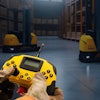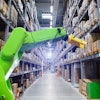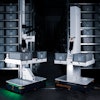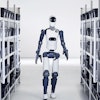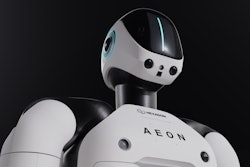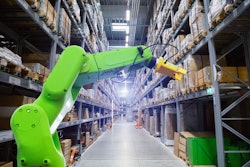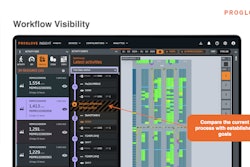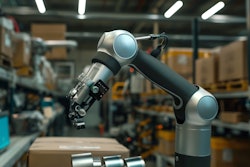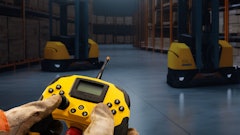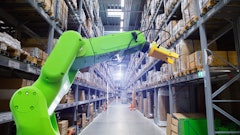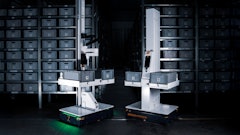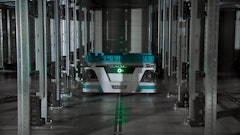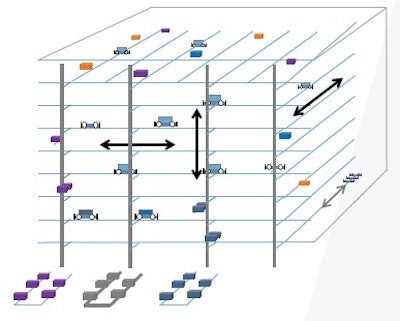
The warehouses at the core of today’s complex supply chains are understandably a study in contrasts, a reflection of where businesses are in their aspirations for growth and the unique automation journey required to get there. But regardless of whether a company is a fast-growing e-commerce brand just beginning to explore how automation can increase the efficiency of its manual materials handling operation, or a global omnichannel retailer intent to refine its state-of-the-art distribution center and the advanced robotics within it, one thing is certain: warehouses are still places that require people to do difficult work.
On both ends of this spectrum warehouses are ground zero for the development of new robotics solutions with the driving factor being the most human of reasons. Uniform, highly repetitive tasks like those in warehouses are problematic for people. Individuals get bored doing the same thing over and over.
They also get hurt. In research completed in 2022, the U.S. Government Accountability Office found that the transportation and warehousing sector had the highest serious injury and illness rate of all industrial sectors. And importantly, the U.S. Occupational Safety and Health Administration found that one of the key drivers for musculoskeletal disorders, one of the most frequently reported causes of lost time in the workplace, is performing the same or similar tasks repetitively. People, unlike machines, are not designed to do the same thing again and again.
Today’s supply chain leaders know this reality all too well as evidenced by two universal challenges in our industry. Warehouse talent and labor, while in high demand, is perpetually in short supply. Secondly, turnover rates are high in positions where processes are repetitive, among them unloading trucks, palletizing cases, and item picking.
Fortunately, there is a solution. In recent years significant advancements in robotics upended how materials handling operations approach these core tasks. Robots also thrive in the very tasks that are most problematic for people. This is because in automation efforts, with robotics specifically, repetition and consistency are key. Robots are broadly and most applicable for jobs that are always the same – for example creating pallets in a warehouse where the cartons being shipped are always the same size and stacked the same way.
Jobs with the consistency that cause boredom and injury to human beings are the easiest and most applicable tasks for robots, which like all machines, can be designed and programmed to do the same thing. Today’s palletizing robots, for example, can create identical pallets for store replenishment time and time again with almost complete perfection.
It is for such reasons that warehouses today arguably offer the greatest example of the promise of robotics and their use in real-world settings. Relying on everything from palletizing robots and autonomous mobile robots (AMRs) to robotic pickers and sophisticated automated storage and retrieval systems (AS/RS), the modern warehouse demonstrates not only the ability of robots to address labor shortage and retention challenges, but also to achieve unprecedented performance. Today’s robot-empowered warehouses and fulfillment operations achieve throughput levels and order accuracy unthinkable just a few years ago.
Variability – The missing link
Despite the performance of today’s warehouses and distribution centers, one capability remains at the top of every supply chain leaders’ robotics wish list: the ability to do variable tasks. Spurred on by the demonstrated utility and business impact of robots to do a single task, greater variability is the next frontier.
Important innovations are in the works, with humanoid-like robots increasingly grabbing the headlines and exciting the imagination of attendees at industry events and conferences. But while the idea of a robot that can complete one task over here, and then another task over there is appealing, the truth is more problematic. For now, true variability remains a decidedly human attribute. This can be seen in what is arguably the most compelling use of robotics in warehouses today: the picking process.
Robotic picking – Past, present and future
Automation in the picking process, including everything from shuttle-based AS/RS and automated case handling robots, address what in most warehouses is the single most time-consuming activity. The use of robot pickers address what is more than 70% of time warehouse employees spend walking. That is why innovations in the use of robotic pickers serve as a bellwether of advancements in robotics, demonstrating the push to add more “variable capabilities,” and offer a glimpse into where we are heading.
When robotic picking first emerged, the ability to effectively pick many different types, shapes, and weights of items immediately became the focus of future innovation. Some predicted such gains would be made in short order, but the complexity of the endeavor quickly became apparent. The ability of robotic pickers to process all of the items in a warehouse would require significant advancements in two areas.
More advanced vision software would be required for robotic pickers to identify the items to be processed and the ability to grip a wide array of very different products would require advancements in the end effectors used by robots – the “hands” used to grasp or move items.
Today, advanced vision software and end effectors enable robotic pickers to effectively process, in most cases, 70-80% of a warehouse with speed, reliability, and accuracy rivaling people. New developments in both areas, including the ability of robotic pickers to swap end effectors also promise to add greater variability in the future. Such developments have cemented the role of robotic pickers in warehouses and materials handling operations, striving to decrease the reliance on people to do inherently repetitive, injury-prone work.
What the increasing ability of robots to do more variable tasks in warehouses will look like in the future, at least in the near future, is less dependent on pure innovation than on other parameters. For picking processes in which the complexity of swapping end effectors adds time and impacts throughput while simultaneously requiring more software code, the argument for simplicity must also be considered.
More complex vision software and more end effectors add additional latency and require more compute power, faster chips and more powerful processors. And like all new innovations, they must be tested, applied, and refined. That is why warehouse leaders will increasingly need to consider the business case involved, the value of new innovations in robotics, and if the efficiencies gained over existing and proven robotic systems warrant their costs and inherent complexity. In the meantime, innovation marches on.

